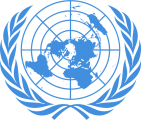
An event titled ‘Contemporary Challenges for International Humanitarian Law’, which was held at the 32nd International Conference of the Red Cross & Red Crescent Societies today (9th) in Geneva, Dr. Rohan Perera, Permanent Representative of Sri Lanka made an intervention and shared Sri Lanka’s national experience with regard to some of the pressing challenges faced by Sri Lanka during its long drawn out NIAC.
Full Statement is as follows:
Contemporary Challenges for International Humanitarian Law (IHL)
I wish to express our thanks to the ICRC for the useful Concept Note, which has provided a range of factors of complexity underpinning the contemporary challenges for IHL. I thank the Panellists for their insights.
The purpose of this intervention is to share our own national experience with regard to some of the pressing challenges faced by Sri Lanka during its long drawn-out NIAC which is a traditional NIAC and to attempt to identify some of the factors that had an impact on the application of IHL principles during the conflict. Two factors identified in the concept note are of particular relevance to our national experience. These are the open rejection of IHL by some parties to the armed conflict, particularly by some non-state armed groups and the increasing tendency to conduct hostilities in urban settings.
It is well recognized today that while the traditional IHL principles were developed in a context where the boundaries of the theatre of conflict were well defined and parties mutually agreed on humanitarian concepts such as safety or neutralized protected zones for the protection of civilians, in the context of the NIACs involving State and non-state armed groups, the well demarcated traditional battleground has receded to the background. In this scenario, a serious dimension has emerged where civilian and civilian installations including humanitarian concepts such as safety zones have merged into the theatre of conflict and are integrated in the overall combat strategy of the non-state armed groups, including the use of civilians as human shields for the prevention of military advancement.
The Sri Lanka experience as in other NIAC situations has clearly shown that armed groups do not as a matter of strategy distinguish themselves from civilians, concealing their identity among civilians, moving their weapons to civilian centres and conduct hostilities in civilian clothes. They also demonstrate a clear tendency to conduct hostilities often in urban settings.
An issue of critical importance that need to be addressed in the context of NIACs is the question of declaring safety zones or No Five Zones in situations where the state is compelled to declare such zones unilaterally when confronted with intransigent non-state armed groups.
As the Sri Lanka experience demonstrated where the non-state armed group is not willing to agree to a negotiated declaration of such zones, providing for civilian protection and once unilaterally declared by the state, utilize them to advance its combat strategy and operations (example “by using civilians within the zone as human shields”), the Field Commanders are faced with the dilemma of protecting civilians on the one hand and neutralizing the fire power of non-state armed groups emanating from within the no fire zone on the other.In such situations the core-principles of Distinction and Proportionality come under considerable strain.
The Sri Lanka experience has in fact given rise to a debate as to whether the unilateral declaration of a no fire zone provided an opportunity to the non-state armed group to consolidate itself amongst civilian enclaves for strategic purposes.
A host of such a difficult situations arise including the question of verification of actions of non-state armed groups in relation to compliance with IHL requirements relating to the protection of civilians, in the context of current trends in NIACs. As several Panellists observed new and creative thinking is required to generate respect for IHL among non-state actors. Reaching out to a wider audience, including Diaspora, Civil Society and religious leaders, has a particular resonance in this regard. In conclusion, the development of appropriate standards, guidelines and procedures to deal with such situations is vital in addressing the contemporary challenges for International Humanitarian Law.
Thank you.


